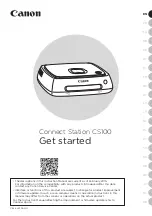
Figure 16: Library configuration example
In this example, there are two physical tape drives in the library; each of these is shown under “Tape
drives” as “Hewlett Packard Enterprise LTO Ultrium-6 drive.” At boot time, the drivers discovered eight
paths to supported SCSI devices in the system, although not all paths were in active use.
Each drive has an SSC device (i.e., tape drive) and an SMC device (i.e., media changer). Each of those
can potentially be accessed through either of the drive’s two primary ports, for a total of two paths per
drive and eight paths total (4 tape drive paths, two each on 2 drives, and 4 media changer paths to one
media changer).
The failover drivers have one path to each of the two tape drives through Switch A. The failover drivers
also have one path to each of the two tape drives through Switch B. Each of those four paths can
potentially connect to either the tape drive or the tape library. At boot time the drivers discover a total of
eight potential paths to devices.
This results in the Windows Device Manager view shown in
Figure 15: Device manager window
page 50. The failover paths appear under
System devices
. A virtual bus named
AdvFO Tape Multi-Path
Intermediate Class Driver ROOT FDO
is created to enumerate the multi-path capable devices. Each of
the eight paths appears as
AdvFO Tape Multi-Path Intermediate Class Driver SCSI FDO
.
The drivers make one path active to each tape drive and one path to the tape library active through the
drive hosting the active control paths. Each physical device appears once in the
Device Manager
. Under
Tape drives
there are two instances of
Hewlett Packard Enterprise LTO Ultrium 6 drive
and under
Medium Changer devices
there is one instance of
HPE ESL G3 Tape Library
.
Device firmware
These two Windows drivers work in conjunction with firmware in the library and tape devices. The special
firmware ensures that the host computer and devices stay synchronized on state and position
information. The advanced path failover device drivers hide the details of this from the rest of the system.
The objective is for the rest of the system (including all applications running on the system and all other
device drivers) to see a single changer or tape device, but not the redundant paths to the failover-enabled
devices. If a path failure occurs, it should be transparent to the rest of the system including applications. If
a path fails, the drivers work with the device to transfer communication to a new path and recover the
command that was in process when the path failed.
Device firmware
51
















































